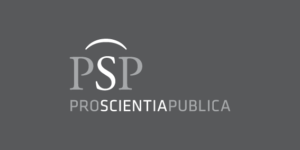An Ode to Interdisciplinary Research: On the Example of Qualitative Study with Certified Translators
DOI:
https://doi.org/10.15503/jecs2025.3.147.160Keywords:
field theory, in-depth interviews, Cognitive linguistics, interdisciplinarity, certified translatorsAbstract
Aim. The aim of this paper is to discuss selected interdisciplinary threads that emerged from a qualitative study with Polish certified translators of English. While the overarching aim of the study was to explore the social space(s) in which certified translators function, the inquiry revealed many other issues reaching beyond the original scope of the study.
Methods. The material for the study was gathered through in-depth interviews with ten certified English translators. The framework for the study was offered by Bourdieusian field theory (Bourdieu, 2001), following the example of the literary field, and the concept of understanding interview (Kaufmann, 2001).
Results. The results are categorised into five perspectives that can be taken in the study. The methodological section tackles the sampling issue and how sample development may be highly informative. The educational section presents translators’ reflections and needs related to their education. The linguistic section shows how cognitive linguistics may be used to deepen the interpretation of collected material. The communicative perspective focuses on how interviews allow for an in-depth contextualisation of communication-related difficulties. The sociological perspective discusses the results as interpreted with the field theory.
Conclusions. Interdisciplinarity, though it is sometimes considered an overused concept, may still bring novel perspectives and lead to valuable findings. The discussed study with certified translators shows how respect for other disciplines and changing vantage points may result in surprising discoveries.
Downloads
References
Bender, H. A., García, A. M., & Barr, W. B. (2010). An interdisciplinary approach to neuropsychological test construction: Perspectives from translation studies. Journal of International Neuropsychological Society, 16(2), 227-232. https://doi.org/10.1017/S1355617709991378
Bourdieu, P. (2001). Reguły sztuki. Geneza i struktura pola literackiego [The rules of art: Genesis and structure of the literary field] (A. Zawadzki, Trans.). Universitas. (Original work published 1992)
Bourdieu, P., & Wacquant, L. J. D. (2001). Zaproszenie do socjologii refleksyjnej [An invitation to reflexive sociology] (A. Sawisz, Trans.). Oficyna Naukowa. (Original work published 1992)
Gentzler, E. (2014). Translation studies: Pre-discipline, discipline, interdiscipline, and post-discipline. International Journal of Society, Culture, and Language, 2(2), 13-24.
House, J. (2015). Translation as Communication Across Languages and Cultures. Routledge. https://doi.org/10.4324/9781315668956
Kaufmann, J.-C. (2010). Wywiad rozumiejący [The understanding interview] (A. Kopciak, Trans.). Oficyna Naukowa. (Original work published 2007)
Klosi, I., Bici V., & Spahiu I. (2024). Machine translation and human expertise in environmental projects. The Buna River Veliopja case. Knowledge – International Journal, 66(5), 633–637.
Lakoff, G. (2007). The contemporary theory of metaphor. In V. Evans, B. K. Bergen, & J. Zinken (Eds.), The cognitive linguistics reader (pp. 264-315). Equinox.
Lakoff, G., & Johnson, M. (2003). The metaphors we live by. The University of Chicago Press. (Original work published 1980)
Langacker, R. W. (2008). Cognitive grammar. A basic introduction. Oxford University Press.
Nida, E. A., & Taber, C. R. (1982). The theory and practice of translation. Brill. https://doi.org/10.1163/9789004669147
Noy, C. (2008). Sampling knowledge: The hermeneutics of snowball sampling in qualitative research. International Journal of Social Research Methodology, 11(4), 327-344. https://doi.org/10.1080/13645570701401305
Ministerstwo Sprawiedliwości. (2018, October 30). Informacje dla osób pragnących uzyskać prawo do wykonywania zawodu tłumacza przysięgłego [Information for persons wishing to obtain a licence to practise as a sworn translator]. Serwis Rzeczypospolitej Polskiej. https://www.gov.pl/web/sprawiedliwosc/informacje-dla-osob-pragnacych-uzyskac-prawo-do-wykonywania-zawodu-tlumacza-przysieglego
Munday, J. (2016). Introducing translation studies: Theories and applications. Routledge.
Parker, C., Scott, S., & Geddes, A. (2019). Snowball sampling. In P. Atkinson, S. Delamont, A. Cernat, J. W. Sakshaug, & R. A. Williams (Eds.), SAGE research methods foundations (n.p.). https://dx.doi.org/10.4135/9781526421036831710
Schäffner, C. (2004). Political discourse analysis from the point of view of translation studies. Journal of Language and Politics, 3(1), 117-150. https://doi.org/10.1075/jlp.3.1.09sch
Tabakowska, E. (2015). Myśl językoznawcza z myślą o przekładzie. Wybór prac [Linguistic thought with a view to translation. A selection of papers]. Wydawnictwo Uniwersytetu Jagiellońskiego.
Taherdoost, H. (2016). Sampling methods in research methodology: How to choose a sampling technique for research. International Journal of Academic Research in Management, 5, 18-27.
Vermeer, H. J. (2000). Skopos and commission in translatorial action. In L. Venuti (Ed.), The translation studies reader (pp. 221–232). Routledge.
Downloads
Published
Issue
Section
License
Copyright (c) 2025 Patrycja Karpińska

This work is licensed under a Creative Commons Attribution 4.0 International License.
CC-BY
Authors retain copyright and grant the journal right of first publication with the work simultaneously licensed under a Creative Commons Attribution License that allows others to share the work with an acknowledgement of the work's authorship and initial publication in this journal. All authors agree for publishing their email adresses, affiliations and short bio statements with their articles during the submission process.


